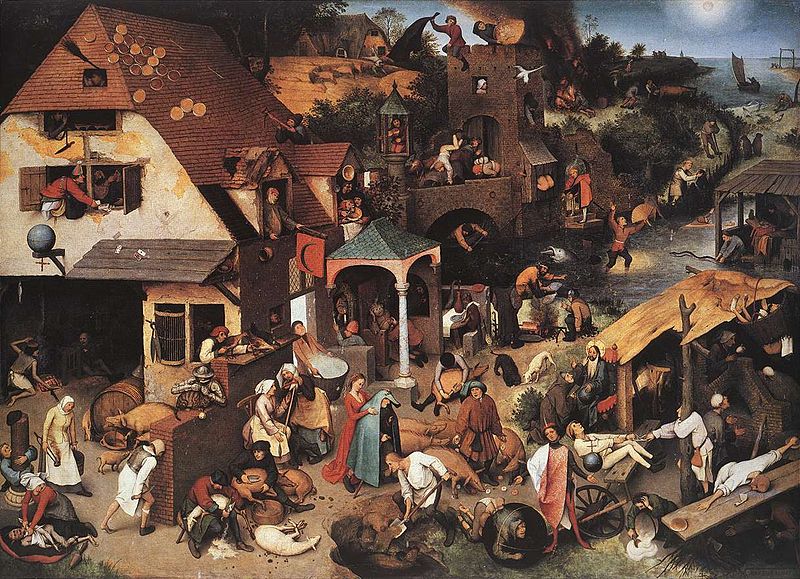
In our efforts to reduce poverty and spur economic growth, we can be overly consumed in debates about top-down policy tactics and the proper allocation of physical resources. Yet, as many economists are beginning to recognize, the distinguishing features of free and flourishing societies are more readily found at the levels of culture—attitudes, beliefs, and imagination.
According to economist David Rose, for example, “it is indeed culture—not genes, geography, institutions, policies, or leadership—that ultimately determines the differential success of societies.” Or, as Deirdre McCloskey argues, it is “ideas and rhetoric,” not capital, or even our institutions, which deserve our utmost praise and attention. “Our riches did not come from piling brick on brick, or bachelor’s degree on bachelor’s degree, or bank balance on bank balance,” she writes, “but from piling idea on idea.”
But while this certainly helps us locate a starting point, might there be more to “culture” than simply our attitudes and ethics, “ideas and rhetoric”? According to economist Arnold Kling, we’d do well to expand our vision of “culture” to also include institutions, taking a more complete and cohesive view of the space between individual and state.
“I suggest that we should stop trying to talk about culture and institutions as if they were separate,” Kling writes in response to Rose’s new book. “Instead, I propose that we think of culture as having two components: informal culture, which we can call folkways; and formal culture, which we can call institutions. In this framework, institutions are subsumed under culture, as an aspect of culture, a subset of culture, or a manifestation of culture.”
Using the art of dance as an example, Kling recounts how “the hustle” became a widespread cultural phenomenon—originating casually among Puerto Rican teenagers (folkways), but eventually rising to prominence, and thus, codification and formal education and formal practice (institutions).
Kling describes the distinction as follows:
Folkways are beliefs and practices that develop within a society by a process of modification and imitation. Institutions are beliefs and practices that are consciously formulated. Institutionalized culture is codified, often in writing. Terms are defined, and practices are standardized. People stop to analyze why certain practices are necessary and to debate whether particular modifications are acceptable. Experts are recognized and certified. Organizations are formed. Individuals and organizations make capital investments pertinent to the particular cultural phenomenon.
Some aspects of culture are closer to folkways. Other aspects of culture are highly institutionalized. Some aspects fall in between.
Drawing from economist Hernando de Soto’s The Mystery of Capital, Kling offers the example of property rights. “In poor countries, squatters will attempt to assert property rights, and these can be recognized by folkways,” Kling explains. “But [de Soto] pointed out that only when these property rights are institutionalized can they be used to build wealth.”
Or, as de Soto explains in the Acton Institute’s PovertyCure series: “Try and imagine a football match without rules…The rules are crucial to get that game going. But everyone knows how to drive a ball. Everybody knows how to buy and sell, so there is plenty of entrepreneurship in the world. The problem is the rules. In two-thirds of the world, there isn’t yet the rule of law.”
The basic fight for healthy institutions and a healthy institutional framework is deeply connected to the shape of our cultural attitudes and imaginations. Thus, at least in our modern context, it’s important that we pursue and promote both folkways and institutions, and recognize the back-and-forth cultural reinforcement that’s necessary if society is to flourish.
“In an adverse institutional environment, people who might otherwise engage in commercial activity and encourage others who do likewise might instead find their commercial inclinations repressed or corrupted,” Kling concludes. “But in a society where the folkways discourage innovation or economic success, having a legal framework conducive to capitalism probably will not be sufficient to create a thriving market economy.”
Such a distinction may seem trivial, but its implications reach well beyond nit-picky academic debates among economists and economic historians. Indeed, in our current cultural vocabulary, we already blur many of these lines without considering the full ripple effects of what we’re actually valuing and what we’re ultimately fighting for.
In the broader political discourse, for example, we see politicians like Sen. Mike Lee and thinkers like Tim Carney and Charles Murray reminding us of the need for a vibrant civil society and the “associational life” that’s found in local institutions—political and economic, but also communal, educational, religious, and so on. How we approach folkways vs. institutions and the connections in between is essential for fostering a healthy cultural framework in these areas.
Likewise, within the church, we see a renewed awareness of the value of cultural institutions. “For cultural change to grow and persist, it has to be institutionalized,” writes Andy Crouch, “meaning it must become part of the fabric of human life through a set of learnable and repeatable patterns. It must be transmitted beyond its founding generation to generations yet unborn.” Or as Chris Horst explains, “Institutions reinforce or repudiate our values. They develop or diminish the dignity of people living in our society. They can impair or allow us to accomplish more together than we could ever do alone.”
By expanding and enhancing our view of culture as such, we have a clearer framework for organizing our thoughts and actions—fighting not just for the organic creativity and value creation of bottom-up innovators and entrepreneurs, but also for stronger and enduring cultural pathways to reinforce and preserve what our freedom has already proven to yield.
Image: Netherlandish Proverbs, Pieter il Vecchio Bruegel (Public Domain)

